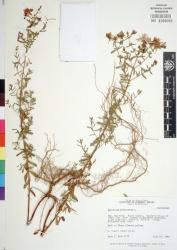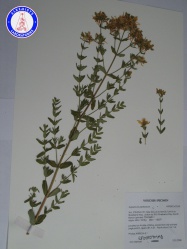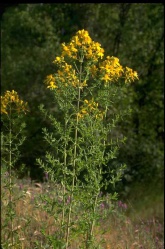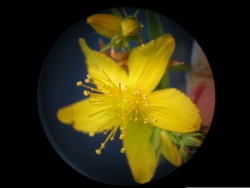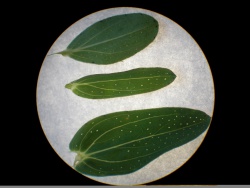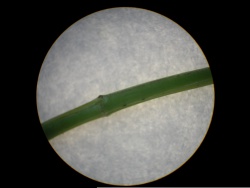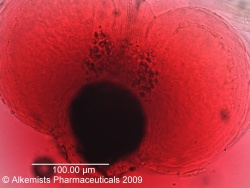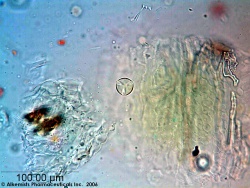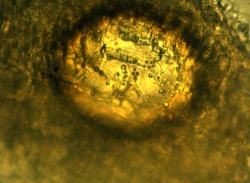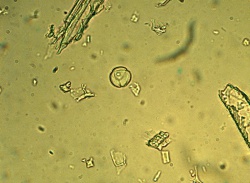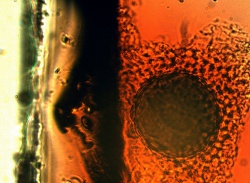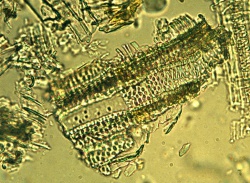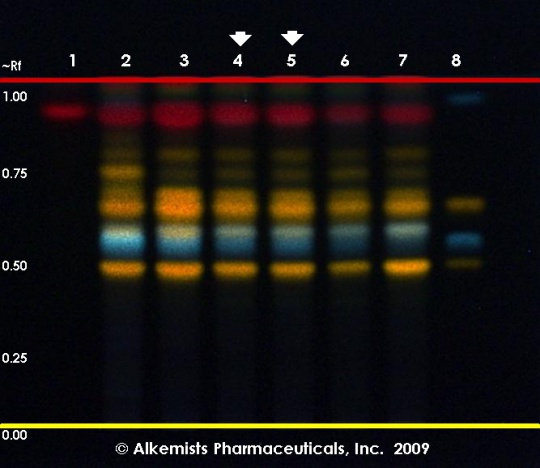Hypericum perforatum (flowering tops)
(Nomenclature updated) |
|||
| Line 10: | Line 10: | ||
=Botanical Voucher Specimen= | =Botanical Voucher Specimen= | ||
{| border=1 | {| border=1 | ||
| − | | {{botcon |companyimage= | + | | {{botcon |companyimage=TropicosLogo.gif |
| − | | companyURL= http://www. | + | | companyURL=http://www.tropicos.org/Image/61762}} || {{botcon |companyimage= AP-LOGO-Laboratories Crop - Copy.jpg |
| − | + | ||
| companyURL= http://www.alkemist.com}} | | companyURL= http://www.alkemist.com}} | ||
|- | |- | ||
| + | | {{botimg |mainimage=St. John's Wort Tropicos 61762.jpg | ||
| + | |source=Tropicos.org. Missouri Botanical Garden. 28 Feb 2014 <http://www.tropicos.org/Image/61762>}} | ||
| {{botimg |mainimage= Hypericum perforatum LF00509MMB A0153.jpg | | {{botimg |mainimage= Hypericum perforatum LF00509MMB A0153.jpg | ||
| − | |||
| − | |||
| − | |||
| − | |||
|source= Botanical Voucher Specimen Library, Alkemists Laboratories http://www.alkemist.com}} | |source= Botanical Voucher Specimen Library, Alkemists Laboratories http://www.alkemist.com}} | ||
|} | |} | ||
=Organoleptic Characteristics= | =Organoleptic Characteristics= | ||
| − | + | {| border=1 | |
| + | | {{Macroscopy | source=WHO monographs on selected medicinal plants, Vol.2, World Health Organization, Geneva, 1999 | ||
| + | | description='''Color:''' Stem greenish-yellow to brownish-yellow; leaves greenish-grey; flowers, green sepals, golden-yellow petals | ||
| + | '''Aroma/Odor:''' Weak, aromatic, balsamic | ||
| + | '''Flavor/Taste:''' Bitter, acrid}} | ||
| + | |} | ||
=Macroscopic Descriptions= | =Macroscopic Descriptions= | ||
{| border=1 | {| border=1 | ||
Revision as of 16:47, 28 February 2014
Contents |
Nomenclature
Hypericum perforatum L. Clusiaceae
Standardized common name (English): St John's wort
Botanical Voucher Specimen
 |
|
|
|
|
Organoleptic Characteristics
|
Macroscopic Descriptions
|
|
|
|
|
Microscopic Characteristics
|
High Performance Thin Layer Chromatographic Identification
|
St. John's Wort (herb) (Hypericum perforatum) Lane Assignments Lanes, from left to right (Track, Volume, Sample):
Reference materials used here have been authenticated by macroscopic, microscopic &/or TLC studies according to the reference source cited below held at Alkemists Laboratories, Costa Mesa, CA. Stationary Phase Silica gel 60, F254, 10 x 10 cm HPTLC plates Mobile Phase ethyl acetate: Acetic acid: HCOOH: H2O [10/1.1/1.1/2.4] Sample Preparation Method 0.3 g + 3 ml 70% grain EtOH sonicated + heated @ 50° C ~ 1 hr Detection Method Natural Product Reagent + PEG -> UV 365 nm Reference see British Pharmacopoeia, 2003
|
Supplementary Information
Sources
- ↑ Tropicos.org. Missouri Botanical Garden. 28 Feb 2014 <http://www.tropicos.org/Image/61762>
- ↑ Botanical Voucher Specimen Library, Alkemists Laboratories http://www.alkemist.com
- ↑ WHO monographs on selected medicinal plants, Vol.2, World Health Organization, Geneva, 1999
- ↑ Roy Upton, American Herbal Pharmacopoeia® http://www.herbal-ahp.org/
- ↑ American Herbal Pharmacopoeia® http://www.herbal-ahp.org/
- ↑ American Herbal Pharmacopoeia® http://www.herbal-ahp.org/
- ↑ American Herbal Pharmacopoeia® http://www.herbal-ahp.org/
- ↑ Elan M. Sudberg, Alkemist Laboratories http://www.Alkemist.com
- ↑ Elan M. Sudberg, Alkemist Laboratories http://www.alkemist.com
- ↑ Elan M. Sudberg, Alkemist Laboratories http://www.alkemist.com
- ↑ Claudia Borst, PhytoLab http://www.phytolab.com/en.html
- ↑ Claudia Borst, PhytoLab http://www.phytolab.com/en.html
- ↑ Claudia Borst, PhytoLab http://www.phytolab.com/en.html
- ↑ Claudia Borst, PhytoLab http://www.phytolab.com/en.html
- ↑ Elan M. Sudberg, Alkemist Laboratories http://www.alkemist.com
